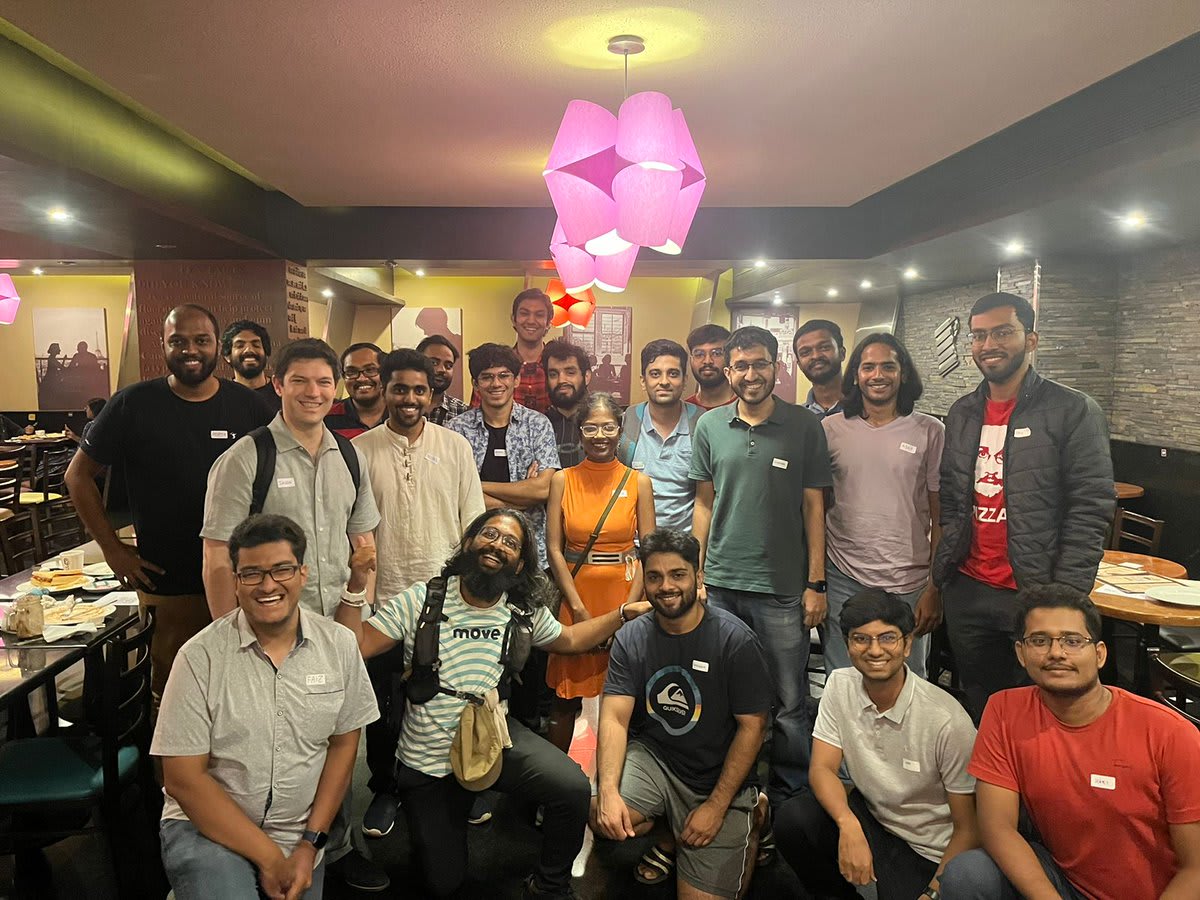Announcements
The Conservative Futurist: How to Create the Sci-Fi World We Were Promised is available for pre-order (via @JimPethokoukis)
Asimov Press is “an editorially-independent venture that will publish books and essays that make sense of biology, AI, and our collective future” (via @AsimovBio and @NikoMcCarty, who will be its first editor)
Statecraft, a new newsletter from the Institute for Progress, is an interview series about how policymakers actually get things done (via @rSanti97)
HumanProgress.org has been revamped, including a new interactive data page that lets you create your own visualizations (via @Marian_L_Tupy)
Maximum New York raised $17,500 of its $150,000 goal in the first week of its fundraiser. Founder Daniel Golliher is also starting chemotherapy for Hodgkin’s lymphoma—he says the prognosis is good, but send your best wishes (via @danielgolliher)
The US Megaprojects Database, contributions solicited (via @_brianpotter)
New issue of Works in Progress
Issue 12 features:
Making architecture easy. “Buildings should be designed to be agreeable—easy to like—not to be unpopular works of genius”
Growing the growth coalition. “If we want voters to encourage growth near them, we need to make it worth their while”
and more!
Articles
Anton Howes asks: does history have a replication crisis? (via @s8mb)
Video
Veritasium on cargo airships (via @elidourado, who else)
Queries
“I’m looking to talk (on the record) to expert on dealing with the result of car crashes—like an emergency medicine doctor, EMT, etc. Any suggestions?” (@binarybits)
“I want to go to a few talks at Berkeley or Stanford for fun—physics, biology, math + CS but also humanities. Any suggestions for ones w/ high quality content or attendees?” (@LauraDeming)
Quotes
“This then is our task, to gather the highest discoveries that have been made in the sciences, to render them clear and fascinating, and to offer them to childhood.” Montessori (via @mbateman)
“If the world farmer reaches the average yield of today’s U.S. corn grower during the next 70 years, 10 billion people eating as people now on average do will need only half of today’s cropland. The land spared exceeds Amazonia.” Jesse H. Ausubel (via @Marian_L_Tupy)
History
Life before modern communication technology: “Despite being born in the same year and only about 130 kms apart, Bach and Handel never met. In 1719, Bach made the 35-km journey from Köthen to Halle with the intention of meeting Handel; however, Handel had left the town” (@StefanFSchubert)
Related: “The technology in this video is why you and your family don’t have to be subsistence farmers anymore” (@AlecStapp)
“1838: a Congressman is shot and killed in a duel over corruption. 1930s: 1 in 4 Americans are unemployed. 1968: riots break out in 130 cities. 1971-2: 2500+ domestic bombings occur” (@heyemmavarv highlighting points from a WSJ opinion piece via @sapinker, who comments “The best explanation for the good old days is a bad memory: America’s divisions were worse in the past (and not just in the run-up to the Civil War)”)
Misc.
“For most of the time during which anatomically modern humans have existed, there were fewer of them on Earth than there are FLYING IN THE SKY at any given instant today” (@DavidDeutschOxf riffing on @michael_nielsen)
“Despite dire projections of climate impacts, many aspects of human well-being are expected to improve over time. Our climate assessments need to include this context. … How can the outlook be dire but improvements also be expected? It’s because well-being (health, living standards, food security, water security, etc.) is driven by multiple factors, not just climate. Climate effects may be negative while the effects of other drivers (economic development, technology, social change, policy, etc.) may be positive and outweigh climate effects. So, for example, we expect longer lifespans even as warming causes more temperature-attributable deaths, less poverty overall even while climate change pushes some into poverty, fewer people hungry even while climate change exacerbates hunger for some.” (@oneill_bc)
One of the challenges of arguing for (future) progress: (1) People don’t see how the future could be much better, and (2) when you tell them how, they don’t believe you because it sounds like science fiction. Of course, science fiction has come true, over and over again. But many people are only willing to extrapolate current trends, and not the meta-trend that current trends are always broken by new, unforeseen (and unforeseeable) developments. (Threads, Twitter)
“If GPT-4 could explain things to me by showing me simple animations or interactive examples… would learn so much” (@willdepue). This will happen, sooner than most people expect, and it will be amazing
“I’ve read two good books on advertising: David Ogilvy’s Confessions of an Advertising Man, and Byron Sharp’s How Brands Grow. Together they make a cohesive—and contrarian—picture of how advertising works.” Thread by @s_r_constantin
“Furniture doesn’t last long now because you the customer care more about cost than durability” (@robinhanson commenting on WaPo). Related, an old cast iron stove might last 100 years, but the new ones are better
“Using laser scanners with error tolerances below 65 microns,” manufacturers can now “scan, identify defects and effect a simple quick repair” using direct laser deposition, rather than replace highly expensive components: thread by @Jordan_W_Taylor
Public health communication in 1912 (@paulisci)
Politics
“I ran preschools for about a decade. The main drivers of child care costs are wages and real estate. Teachers demand higher pay where it’s expensive to live. If we want cheaper child care, we need to make it legal to build lower-cost housing types” (@RyanPuzycki). One more exhibit for The Housing Theory of Everything
Related: “The system isn’t slowing down because it’s failing—it’s slowing down because people are responding rationally to the incentives they face.” Thread from @MichaelDnes1 on what might speed up UK infrastructure. See also his previous thread on why it is slow in the first place, especially this diagram: “It takes 5.5 years to get to the point at which you can put a spade in the ground, assuming everything goes to plan”
“If you saved $100,000 USD of pesos in 1995, they’d be worth $137 USD today. Argentina has seen an average of 100% annual inflation for the last century” (@devonzuegel)
“It’s weird that people consider UBI some newfangled, speculative idea. In every way that matters ‘UBI’ is identical to ‘welfare’ ‘the dole’ etc. This has all been debated without pause since about twelve seconds into the Industrial Revolution” (@benlandautaylor)
“We need a concerted campaign against public clutter. Cookies banners, consent boxes, excessive street signs & markings, pointless loud safety announcements, etc—each one is small by itself, but they all add up and make everyday life uglier and more of a complicated hassle” (@s8mb). Leftover covid signage is a good example
“Single stair, no setbacks, buildings touching. All illegal in the United States or Canada, but legal everywhere else. They also win international awards. Maybe our [building] codes suck?” (@pushtheneedle commenting on @Architizer’s post about a building using prefab wood, 5 levels built in 10 days)
Startups
“‘Give yourself a lot of shots to get lucky’ is even better advice than it appears on the surface. Luck isn’t an independent variable but increases super-linearly with more surface area—you meet more people, make more connections between new ideas, learn patterns, etc” (@sama). Related, Marc Andreessen on the four kinds of luck
“Think of your favorite startup. No matter how good they look, I guarantee you they have almost died, multiple times, for reasons dumber then you can imagine. Their internal org is probably mostly chaos. Don’t be too hard on yourself. Just keep building as fast as possible” (@thegarrettscott)
“It’s funny how heretical this statement is but: some of us really really like working hard on things that are important to us, especially surrounded by caring and sometimes brilliant people. No mojitos on the beach can possibly compete with that” (@tobi)
Charts
Solar deployment is now happening at a roughly $500B annualized rate (via @patrickc, who asks, “Which technology deployments were larger than this? The US’s aircraft production during WWII seems to have peaked at maybe $400B (inflation-adjusted). Global datacenter construction appears to be maybe $200B/year.”)
Pics
Had a great time meeting locals and chatting about progress at the Bangalore LessWrong / Astral Codex Ten meetup




The math for airships isn’t favorable for bulk cargo transport; competent analysis has them being more expensive than conventional winged aircraft per ton-mile, as well as slower.
What airships potentially make sense for is applications where volume and duration are important, not applications where ton-miles are the metric. For example:
aerostat surveillance (used now!)
aerostats as telecom platforms (currently more expensive than towers, but potentially competitive)
luxury airliners, like cruise ships or luxury yachts in the sky (@atroyn likes those)
Natural gas transport might seem like a natural application for airships, but the economics don’t work out for that either; pipelines carrying gas at high pressure are much better.
Whose “competent analysis”?
Eh, there are a bunch of papers, but you almost always have to make some adjustments and do some interpolation. For example, you might take this paper and add in some estimates for maintenance costs + ballast handling + inflation since it was written. (Usually one of the communities I’m in has already done the work for me.)
Thanks, I think the crux is economies of scale, both in size of the airship and production rate. That paper assumes the same cost as the Zeppelin NT, and its cost estimate is 93% airframe cost. The assumption is that the airframe cost per kg is the same as the Zeppelin NT, of which only 7 have ever been built. The Eli Dourado article imagines huge economies of scale, with airships 5x larger than the study, 25,000 units and a cost around $100 million per unit or ~12x lower per kg.
I would guess scaling is unlikely to work because it requires hydrogen, but there’s so much money available to solve at least the technical problems.
There are a bunch of papers and approaches you can take. Another approach is estimating airship costs from manufacturing costs of Boeing/Airbus; this requires a good understanding of manufacturing processes and aircraft design, but anyway, the costs per payload capacity seem comparable for equal levels of competence and manufacturing scales and experience with manufacturing. And airships are much slower, and you have to deal with ballast issues. Could you build airships cheaper than that? Probably, yeah, but you could also build regular aircraft cheaper than that, too.
Bigger ships aren’t necessarily cheaper to build. You need bigger facilities, and there are square-cube laws, you need to transfer forces over larger distances. Yes, the same is sort of true for aircraft, but if scaling up means more of the fuel can go in the wings, then square-cube laws don’t apply the same way.
Using hydrogen isn’t really a safety problem, but it is a regulation and PR problem.
No matter what the cost of airships is, they’re obviously better when you want duration or volume than when you want ton-miles. So you target the applications that make more sense first, and then if that works out well, you can think about other applications and have more data to evaluate them. Eli does not think this way. He goes straight to “let’s build a million huge cargo airships!!!” and he also doesn’t know shit about aircraft design, which is a deep and multidisciplinary field with extensive research into it. So, why would people take him seriously?
Aircraft costs per ton-mile are variable, but here is a report from American Airlines showing $0.33/ton-mile in 2018.
I haven’t investigated this, but there is a long essay from Eli Dourado here that is bullish on the concept.
Given the time kids spend in front of screens, we should make more movies like this.
I agree, but also I am afraid that this is an infohazard. The typical consequence of this meme is not “more people working on things that feel important to them”, but rather an increased pressure on people to pretend that they care deeply about the jobs they apply for so that they can pay their bills. (“You don’t have a github portfolio of open-source projects you maintain during your free time? I guess you do not truly love software development.”)
If you want to know what people truly think about their jobs, offer them UBI, and see if they stay.
It’s not just about being interested in things and being able to work hard. You also need to find a way to monetize your hard work on the things that are meaningful for you, reliably and quickly. (Getting maybe some money maybe a few months or years later, does not help to pay your bills today.)